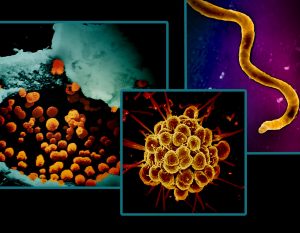Navigating the world with diabetes insipidus can feel like managing a constant thirst that doesn’t quite quench, coupled with frequent trips to the bathroom. Despite its rarity, those afflicted by this condition quickly learn to adapt, crafting a lifestyle that accommodates their needs. Understanding the nuances of diabetes insipidus (DI) and its management strategies can transform this seemingly daunting challenge into a routine part of daily life.
Understanding Water Balance: The Role of ADH
Our bodies have a sophisticated mechanism for regulating water balance, primarily controlled by the antidiuretic hormone (ADH), also known as vasopressin. Produced in the hypothalamus and released by the pituitary gland, ADH instructs the kidneys to conserve water, concentrating urine when the body is dehydrated. Conversely, when hydration levels are adequate, ADH production decreases, allowing the kidneys to excrete more water.
In diabetes insipidus, this balance is disrupted. Either the body doesn’t produce enough ADH, or the kidneys fail to respond to it, resulting in large volumes of dilute urine and persistent thirst. Unlike diabetes mellitus, which involves insulin and blood sugar regulation, DI focuses on water metabolism and ADH function.
Types of Diabetes Insipidus
Understanding the type of DI is crucial for effective management, as each type requires a unique approach. Let’s explore the four primary forms of this condition.
Central Diabetes Insipidus (CDI)
This form arises from a deficiency in ADH production due to damage or dysfunction in the hypothalamus or pituitary gland. Common causes include head trauma, neurosurgery, brain tumors, or inflammatory conditions like meningitis. Occasionally, genetic mutations or autoimmune responses can also be at play.
In clinical practice, patients often describe a sudden onset of symptoms following head injury or surgery, characterized by intense thirst and frequent urination.
Nephrogenic Diabetes Insipidus (NDI)
In NDI, the kidneys do not respond appropriately to ADH. This resistance can be triggered by medications like lithium, chronic kidney disease, or imbalances in calcium or potassium levels. Genetic mutations affecting water channels in the kidneys can also lead to NDI.
A telltale sign of NDI is the lack of response to desmopressin, a synthetic form of ADH, which fails to concentrate the urine.
Gestational Diabetes Insipidus
This temporary condition occurs during pregnancy when the placenta produces an enzyme that degrades ADH. It typically manifests in the second or third trimester and often resolves post-delivery. Desmopressin remains effective as it is not broken down by the enzyme.
Dipsogenic Diabetes Insipidus (Primary Polydipsia)
Here, excessive fluid intake suppresses ADH release, leading to increased urination. This condition may stem from a dysfunctional thirst mechanism or behavioral factors. It’s crucial to differentiate this from other types of DI, as treatment involves reducing fluid intake rather than administering desmopressin.
Recognizing Symptoms and When to Seek Help
Core Symptoms
Individuals with DI experience relentless thirst and produce large volumes of dilute urine—often exceeding 3 liters per day, compared to the typical 1.5–2 liters. Frequent nighttime urination disrupts sleep, impacting daily energy levels and mood.
Additional symptoms include dry mouth, fatigue, headaches, and dizziness, especially upon standing due to dehydration.
Red Flags
Immediate medical attention is warranted if symptoms escalate to vomiting, severe diarrhea, extreme weakness, new-onset seizures, or a significant drop in urination while on desmopressin. These signs may indicate a serious imbalance in sodium levels, requiring urgent correction.
Diagnostic Approaches
Accurate diagnosis is essential for tailoring treatment to the specific type of DI.
Initial Assessment
A thorough medical history, focusing on the onset of symptoms, potential head injuries, medications, and family history, provides valuable clues. Basic tests include urinalysis to check for dilute urine, and blood tests to assess sodium levels and kidney function.
Differentiating Types
A water deprivation test, conducted under medical supervision, helps distinguish between DI and other conditions. In this test, fluid intake is restricted while monitoring urine concentration. If urine remains dilute, desmopressin is administered to differentiate between central and nephrogenic DI.
Newer tests, like copeptin measurement, offer a less invasive alternative, providing accurate results without prolonged dehydration.
Imaging
For suspected central DI, an MRI of the pituitary gland can reveal structural abnormalities or tumors affecting ADH production.
Treatment Strategies
Effective management of DI combines medication with lifestyle adjustments to maintain sodium balance and overall well-being.
Central DI: Hormone Replacement
Desmopressin, available in various forms such as tablets, nasal spray, or sublingual tablets, mimics ADH’s effects. Dosage is personalized, aiming to control symptoms without causing fluid overload. Regular monitoring of sodium levels helps prevent complications like hyponatremia.
Nephrogenic DI: Enhancing Kidney Response
Treatment focuses on addressing underlying causes, such as correcting electrolyte imbalances or adjusting medications like lithium. Diuretics like thiazides can paradoxically reduce urine output by promoting fluid reabsorption. Dietary adjustments, including reduced sodium and moderate protein intake, also help manage symptoms.
Gestational DI: Temporary Management
Desmopressin effectively controls symptoms during pregnancy, with close monitoring by healthcare providers. Postpartum, most women experience a resolution of symptoms, though gradual cessation of desmopressin with medical guidance is recommended.
Dipsogenic DI: Behavioral Modifications
Treatment centers on reducing fluid intake through behavioral strategies and possibly cognitive-behavioral therapy. Addressing underlying psychiatric conditions or habits that drive excessive drinking is crucial.
Day-to-Day Management Tips
Hydration Habits
Track urine output and weight regularly to fine-tune fluid intake. Drink to thirst once treatment stabilizes, avoiding excessive water consumption that can lead to low sodium levels.
Sleep and Nighttime Urination
Timing desmopressin doses to minimize nighttime trips to the bathroom can improve sleep quality. Keeping a small water supply bedside reduces the temptation to overhydrate at night.
Nutrition and Exercise
A low-sodium diet with moderate protein intake helps control urine output. During exercise or hot weather, balance water intake with electrolytes to prevent dehydration without overhydrating.
Travel and Work
Plan ahead for trips, identifying bathroom locations and packing a “DI kit” with medication and necessary supplies. A medical ID can alert others to your condition in emergencies.
Stress Management
Stress can exacerbate symptoms, so incorporating relaxation techniques such as meditation or yoga can be beneficial. Mindfulness practices help maintain a balanced lifestyle and prevent overconsumption of fluids driven by anxiety.
Special Considerations for Vulnerable Groups
Children and Teens
Symptoms like bedwetting, excessive thirst, and irritability may indicate DI. Coordination with pediatric endocrinologists and school accommodations can support management. Educating school staff about the condition helps ensure proper care and understanding.
Pregnancy and Postpartum
Gestational DI requires close monitoring, with desmopressin typically effective and safe. Post-delivery, adjustments to treatment may be necessary as symptoms often resolve. Coordination with obstetricians ensures a comprehensive approach to management.
Older Adults
Fall prevention is crucial as frequent nighttime urination increases risk. Regular medication reviews ensure no drugs exacerbate DI symptoms or sodium imbalances. Simple adjustments like nightlights or bedside commodes can improve safety.
Medication Safety and Monitoring
Regular follow-ups and blood tests are essential for anyone on desmopressin to ensure safe sodium levels and adjust doses as needed. Being aware of symptoms like confusion or fatigue can prompt timely interventions to prevent complications. Patients should report any changes in symptoms to their healthcare provider promptly.
Innovations and Research
Advances in Treatment
Ongoing research into genetic causes of DI offers hope for more targeted therapies. Innovations in drug delivery systems aim to improve the efficacy and convenience of treatments like desmopressin.
Understanding Genetic Factors
Genetic counseling can be beneficial for families affected by hereditary forms of DI. Advances in genetic testing improve diagnosis and inform family planning decisions.
Community and Support
Connecting with support groups and communities can enhance coping strategies and provide emotional support. Online forums and patient networks offer shared experiences and practical advice.
Arming yourself with knowledge about diabetes insipidus and embracing a proactive approach to management can significantly enhance quality of life, ensuring the condition remains a manageable facet of your everyday routine.




